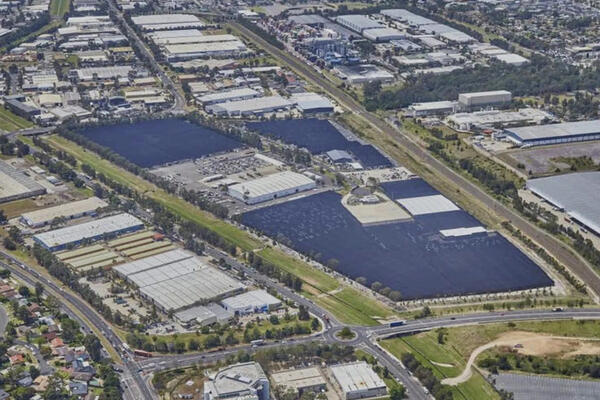
Industrial Lands and Last Mile Freight
For every new home we build in Sydney we also need to develop an additional 13m2 of industrial land in support1. If we need to develop 28,500 new homes per year, we need 366,000m2 of logistics focused industrial land per year2. Large areas on Sydney’s western fringe are being developed that address part of this challenge but not the entirety of requirements for an efficient metropolitan logistics network. Access to land across the city is also required to enable efficient logistics and service operations and moderate Vehicle Kilometres Travelled (VKTs).
Each home in Sydney currently generates about 80 commercial vehicle visits per year3 including “last mile” parcel and grocery deliveries as well as visits from trades and services. This does not include movements further up the supply chain.
In addition to residential areas, commercial centres such as Sydney CBD generate one commercial vehicle for each 18 people working there4.
The city needs industrial land to support a variety of freight activities including port/airport activity, delivery and distribution of goods to businesses and homes, supporting construction and waste management and business support activity.
While there is growth in industrial land on the cities western fringe, there has been significant decline in the Eastern City and pressure increasingly faced in the Central River city. The Industrial land policies5 (including Retain and Manage review 2021) of the Greater Cities Commission (GCC) take action to protect this land but pressure from all sides is still high. Industrial rents have increased substantial particularly around South Sydney6.
The impact of the consolidation of facilities to the city’s western fringe and high levels of demand across the city but particularly in the east, are demonstrated through the growth of registrations for light trucks (90% increase since 20017) and the growth of VKTs8 for this category of vehicles.
A distribution business displaced from the Central River City that moves to the city’s western fringe, is likely to encounter a 65 per cent increase in VKTs to deliver to customers across the entire metropolitan area1.
With increased population and economic growth, TfNSW anticipate a tripling of parcel deliveries by 20619. With an increasing shortage of industrial land across the city to support efficient last mile freight activity, transport policies targeting VKT growth and environmental impacts are yet to be achieved.
TfNSW are working on transport and land use approaches that could mitigate this impact including:
- Better understanding by planners of the relationship between land use, freight trip generation and VKTs
- Advocacy of alternate low emission approaches for last mile freight
- Internal modelling of the impact of loss of industrial land and VKT impact
- Elements of direct intervention on a small scale such as through trialling microhubs for Sydney CBD to support efficient last mile freight activity.
Contact
For more information contact freight@transport.nsw.gov.au.
Related links
1. Based on research by The British Property Federation’s What Warehousing Where? Report of 69sqft of warehousing space = 6.5m2 warehouse to land ration is approximately 1:2
2. https://www.planning.nsw.gov.au/policy-and-legislation/housing/housing-supply-insights/quarterly-insights-monitor-q1/demand-for-housing-in-nsw
3. Commercial vehicle traffic count research undertake by TfNSW 2017-2022
4. Traffic count research undertaken by TfNSW
5. https://greatercities.au/strategic-planning/industrial-lands
6. https://www.commercialrealestate.com.au/news/industrial-rents-surge-30-per-cent-in-sydney-as-supply-shrinks-1174183/
7. https://www.transport.nsw.gov.au/operations/roads-and-waterways/corporate-publications/statistics/registration-and-licensing-1
8. https://www.soe.epa.nsw.gov.au/all-themes/human-settlement/transport#distance-travelled-by-motor-vehicles-in-nsw-status-and-trends
9. Research undertaken by TfNSW, iMove and University of Melbourne (2021)
